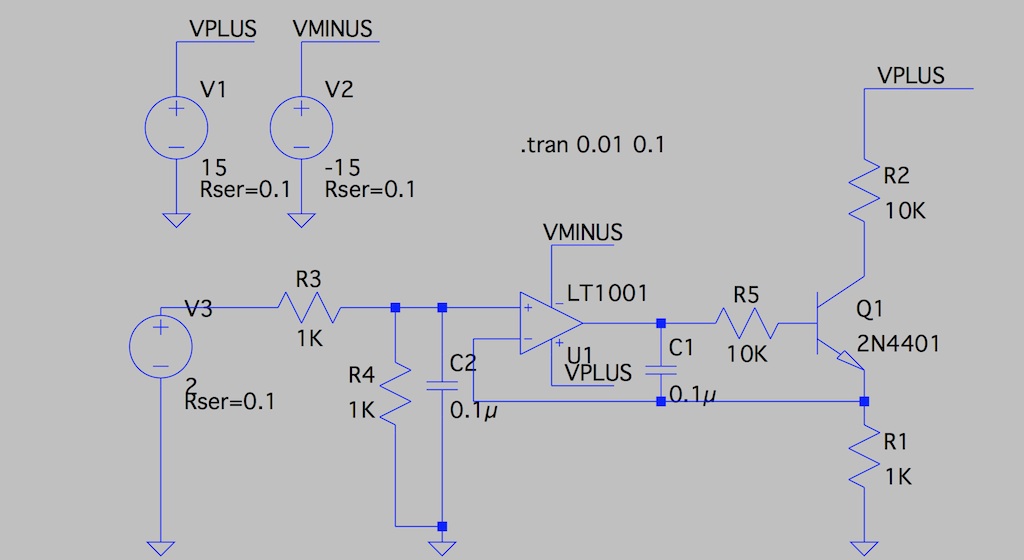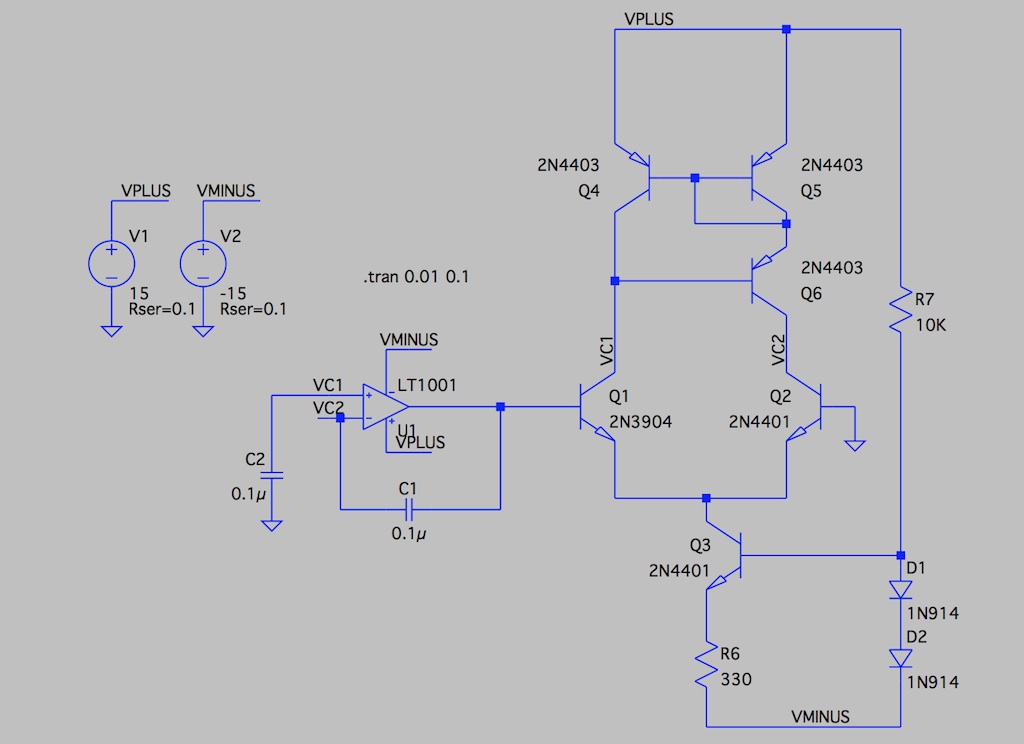Matador
Well-known member
Wanted to get a few opinions.
I have the following matching circuit:

Op-amp is a precision/low offset device. The voltage divider / cap on the non-inverting input may not be required.
Here is what I was thinking: when building guitar pedals, I've finding that certain devices are critical in defining the gain staging and distortion characteristics. A low-ish hfe device in a single stage may sound quite different than a high hfe especially when clipping stages are involved.
I figure that if VBE and hfe are matched closely for these devices (between two pedals) then the sound should be pretty close as well. If VBE is the same, then the base voltage should be the same in this rig, and if hfe is the same, then the voltage drop across R5 should be the same.
Operation: if I set the input voltage to 2V, the the op-amp will force 1V across R1 which is 1mA (assuming I measured R1 before hand) through Q1. The base voltage will be about 0.6-0.8V above 1V, or 1.6-1.8V if the 2N4401 datasheet is to be believed. With hfe of 100, base current should be 10uA which is 0.1V drop across R5.
My assertion: if two devices are measured in this rig, and we record a) the opamp output voltage (WRT ground), and b) the base voltage (WRT ground). Then: if both voltages are the same between two devices, then a) VBE is the same, and b) hfe's are the same (because the currents through R5 are the same). This can also be done at several current levels just by adjusting V3.
(I actually would like to hook these points up to a ADC and have a small microcontroller board to record this for me).
Does this sound feasible? Am I missing something? Perhaps something more basic?
I have the following matching circuit:

Op-amp is a precision/low offset device. The voltage divider / cap on the non-inverting input may not be required.
Here is what I was thinking: when building guitar pedals, I've finding that certain devices are critical in defining the gain staging and distortion characteristics. A low-ish hfe device in a single stage may sound quite different than a high hfe especially when clipping stages are involved.
I figure that if VBE and hfe are matched closely for these devices (between two pedals) then the sound should be pretty close as well. If VBE is the same, then the base voltage should be the same in this rig, and if hfe is the same, then the voltage drop across R5 should be the same.
Operation: if I set the input voltage to 2V, the the op-amp will force 1V across R1 which is 1mA (assuming I measured R1 before hand) through Q1. The base voltage will be about 0.6-0.8V above 1V, or 1.6-1.8V if the 2N4401 datasheet is to be believed. With hfe of 100, base current should be 10uA which is 0.1V drop across R5.
My assertion: if two devices are measured in this rig, and we record a) the opamp output voltage (WRT ground), and b) the base voltage (WRT ground). Then: if both voltages are the same between two devices, then a) VBE is the same, and b) hfe's are the same (because the currents through R5 are the same). This can also be done at several current levels just by adjusting V3.
(I actually would like to hook these points up to a ADC and have a small microcontroller board to record this for me).
Does this sound feasible? Am I missing something? Perhaps something more basic?




